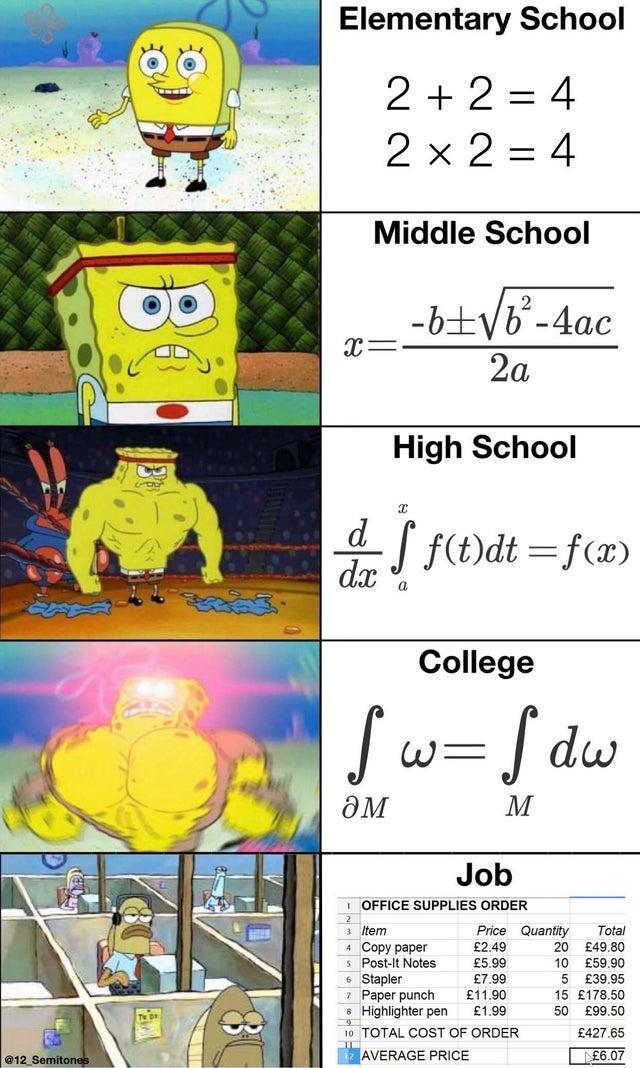this post was submitted on 16 Jun 2024
1185 points (97.8% liked)
Memes
53073 readers
1321 users here now
Rules:
- Be civil and nice.
- Try not to excessively repost, as a rule of thumb, wait at least 2 months to do it if you have to.
founded 6 years ago
MODERATORS
you are viewing a single comment's thread
view the rest of the comments
view the rest of the comments

Yeah seriously WTF, I didn't even learn basic Algebra until freshmen year of high school! We never even got to the math with the fancy letters in it. I have no idea what those cursive f, d, and w characters mean.
Cursive big f: "integration", which can be interpreted in two ways. One is "area under the curve" for some part of the curve. Other is "average value of a part of the curve multiplied by the size of that part of the curve". Curve being the function, the graph, f(x), however you wanna call it.
Normal d: "differentiation" (from difference), infinitely small change. Usually used in ratios: df/dx means how much does f(x) change relative to x when you change x a little bit.
Cursive d: "partial", same as normal d but used when working with higher dimensional data like 3D. Can also mean "boundary" of something. Example: boundary of a volume in 3D, like wrapping paper around a box. Or, boundary of such wrapping paper itself, if it's not perfectly connecting.
Omega: just a Greek letter used as a variable, in this case there's a history of it being used as a sort of "density" variable in the field of differential geometry. The college row in the meme is kind of translating the high school row from a function to a 3D volume.
It's just calculus where admittedly my own education stopped but it's still very helpful in finding values in real-world things like change of value in time. I still hope to one day develop a working knowledge of it, myself. u/...mir below me did a good job of summarizing the two main introductory concepts in much the same way i've read others simplify and describe the subject in classic 100+ yr old books like "Calculus Made Easy by Sylvanus Thompson." I suspect it's not as intimidating as it seems once a person gets past some basic fundamental concepts.